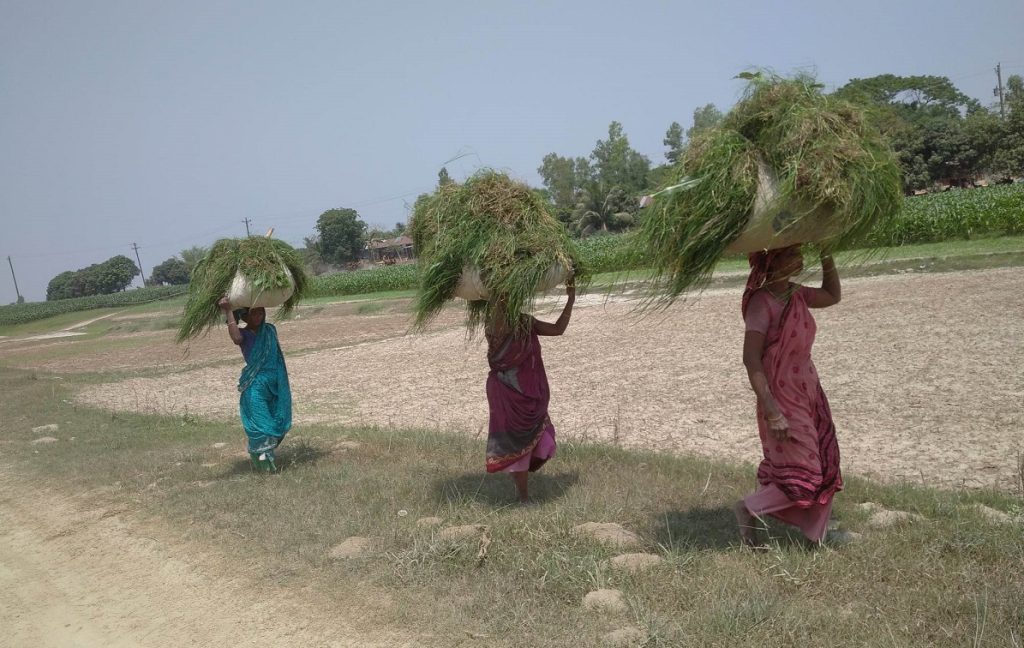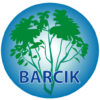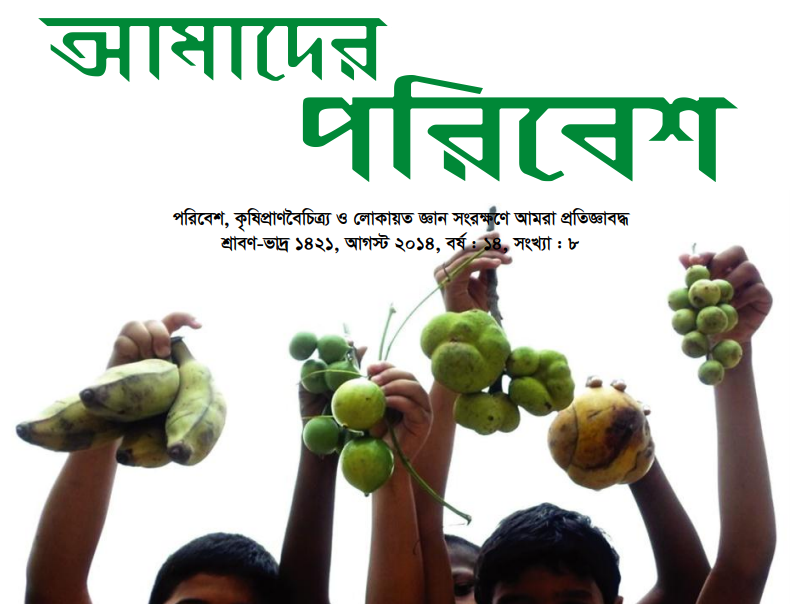Harirampur, Manikganj to Muktar Hossain
Char means a tract of land surrounded by water of ocean. People of living in the char area many times faces natural disasters such as flood and riverbank erosion. These disasters often wash away their homes, kill life and destroy their crops and other resources. However, the women of Harirampur char area are the ones who work hard in the fields and at home from morning to evening and struggle to survive. They do not work only at homes but also in the agriculture lands and collect fuels and fodders for livestock all the day round. Aklima Begum, a woman farmer of Salimpur village, said, “We pass day and night through the pastures and trees.” She said that she wakes up early in the morning and starts working and does not sit down for the whole day. Almost all the women of the village after finishing the household chores go to the pasture lands to collect fodder for their livestock.

Nonetheless, Manikganj Harirampur Upazila is divided by Padma River where almost 95% of people depend on agriculture. Agriculture is inextricably linked to their lives. There are diverse crops in the pastures and each families have at least 5 to 10 livestock predominantly cows. Pastoral women play a major role in rearing livestock such as cows, goats, sheep, buffaloes and horses. They collect food, bring cattle home and take them to chalk stone. On the other hand, along with doing their household works as well as rearing livestock women do extend cooperation towards men in their agriculture works. Women play a role in collecting crops from the field, drying the crops, sorting the weeds and conserving the seeds. Along with this, the women of Char area have made an outstanding contribution in the rearing livestock. Many Char women have changed their socio-economic status by rearing cows, goats and sheep.
Farmers have built small family cattle and goat farms in various villages including Harirampur Patgramchar, Natakhola, Haluaghata, Andharmanik, Karmakarkandi, Bahirchar and Andharmanik of Manikgonj district. Men do most of the work of taking cows and goats to the market, buying and selling them, guarding them at night, and treating them. Bithi Begum, a farmer of Gangadhardi village, said, “We don’t have to feed our cows and calves at home. As a result, our cost is less and the profit is more.” “There was no shortage of grass before, but this grass is decreasing. That is because people are cultivating the fallow lands day by day. And a lot of grass is being destroyed by applying chemicals. Moreover, due to the erosion of the river every year, a lot of land has gone into the river”- she added
Every morning after completing the household chores, the women of the char area go out to collect fodder for the cattle. Women collect food from ponds, banks of canals, natural water bodies near the banks of Padma River. They mainly collect uncultivated food plants that include water durba, durbagas, cut hensi, kashban, chaon, kaishya, reed grass, goicha, hensi, badla, hama, small kalmi and kastri. All these raw grasses are used as cattle feed. Also, pigeon husk, wheat husk, mas kalai husk, khesari kalai husk, rice husk, paddy husk, straw, corn leaves are used as cattle food as well.
The char people are connected with BARCIIK activities and have been benefited from BARCIK through participating in different activities of the organization which they have been able to acquire knowledge on livestock rearing and rice cultivation. They are aware on conservation of biodiversity which provides them alternatives to feed their livestock. Therefore, the char people request all to take initiative to stop the use of chemical fertilizers and herbicides.
Translated by Silvanus Lamin

